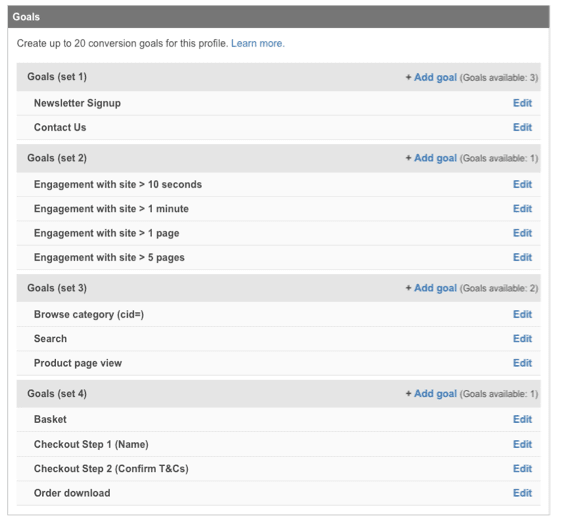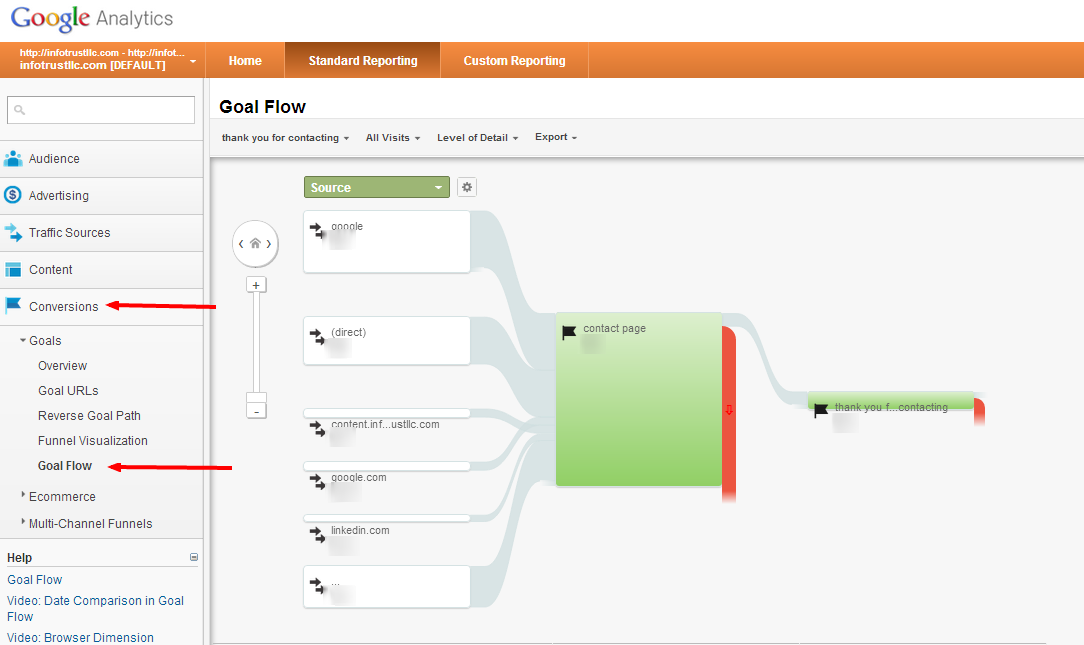Discovering What Data Is Google Analytics Goals Unable to Track
Discovering What Data Is Google Analytics Goals Unable to Track
Blog Article
Discover the Limitations of Google Analytics Goals: Unveiling the Data Kind That Remain Untrackable
As businesses significantly rely on data-driven decision-making, understanding the constraints of tools like Google Analytics comes to be vital. While Google Analytics Goals offer beneficial insights right into user communications, there exist data types that thwart monitoring, posturing difficulties to a comprehensive understanding of user habits. These untrackable data types elevate concerns about the accuracy and efficiency of the analytics data that companies heavily depend upon for their electronic methods. Curious to discover the hidden unseen areas in your data evaluation procedure?
Insufficient Customer Journey Tracking
Incomplete user journey tracking within Google Analytics can impede the ability to accurately evaluate individual actions. When the user journey is not completely tracked, there are spaces in the information that stop a comprehensive understanding of how users communicate with a site. This absence of understanding can cause missed out on chances for optimization and renovations to the customer experience.
One typical problem with insufficient customer trip tracking is the failure to see the complete course that individuals take previously finishing an objective or leaving the site. Without this details, it is challenging to identify where individuals may be encountering challenges or rubbing factors that avoid them from converting. Additionally, incomplete monitoring can obscure the effect of specific advertising initiatives or site modifications on customer actions.
To resolve this restriction, it is important to establish up appropriate tracking systems within Google Analytics to catch the entire customer journey. This may include establishing occasion tracking, objective funnels, or making use of tools like Google Tag Manager to ensure that no important communications go unrecorded. By getting a thorough sight of the user journey, website proprietors can make more educated decisions to improve user engagement and drive conversions.
Acknowledgment Difficulties
Browsing through acknowledgment challenges in Google Analytics calls for a detailed understanding of how various touchpoints add to the total conversion process. Acknowledgment challenges emerge from the complexity of modern customer trips, where customers communicate with several networks prior to transforming. Google Analytics provides different attribution models like very first touch, last touch, and direct, each offering a different perspective on exactly how credit report is assigned to touchpoints along the conversion path. However, these designs may not constantly properly reflect real effect of each touchpoint on the conversion.
One typical attribution obstacle is the trouble in connecting conversions to the appropriate source, particularly in instances where customers engage with numerous networks before transforming. This can lead to inaccuracies in identifying which marketing efforts are driving the most conversions. Additionally, cross-device tracking positions one more attribution obstacle, as customers often switch between devices during their journey, making it testing to track their communications perfectly. Marketers have to meticulously analyze and translate attribution information to make informed decisions and maximize their advertising and marketing approaches properly.
Offline Conversions
Offered the obstacles connected with attributing conversions precisely in online channels, the measurement of offline conversions offers a considerable possibility for marketing experts seeking an extra extensive understanding of their consumers' journey. Offline conversions describe activities that customers absorb the physical world, such as making acquisitions in brick-and-mortar shops or over the phone, going to events, or involving with published materials - what data is google analytics goals unable to track. These conversions are crucial for services that run both online and offline, as they supply valuable understandings right into the effectiveness of advertising and marketing campaigns across numerous touchpoints
Tracking offline conversions typically postured a significant difficulty for online marketers, as it was challenging to link these activities back to details online interactions accurately. Nevertheless, with innovations in modern technology, such as the combination of CRM systems, special identifiers, and promo code codes, businesses can now link the void in between online and offline information to acquire a much more all natural sight of client actions. By efficiently determining offline conversions, marketing experts can enhance their strategies, designate sources much more effectively, and inevitably enhance the total consumer experience.
Cross-Device Monitoring
Cross-device monitoring plays an essential duty in comprehending the interconnected nature of consumers' electronic interactions across multiple tools. In today's omnichannel world, where customers flawlessly switch over between desktop computers, smart devices, and tablets, tracking their actions throughout these gadgets is necessary for marketing professionals to gain a comprehensive view of their client trip.

In addition, privacy problems and regulations such as GDPR and CCPA have even more difficult cross-device monitoring. With customers requiring even more control over their information and enhanced limitations on monitoring modern technologies, online marketers must discover privacy-compliant and cutting-edge methods to link customer communications throughout gadgets.
Dynamic Web Content Involvement
Recognizing customer involvement with vibrant web content is pivotal in optimizing digital advertising and marketing approaches for enhanced audience communication. Dynamic web content describes website aspects that alter based on individual habits, choices, or other factors, providing a tailored experience. Tracking user communications with dynamic content poses obstacles for conventional analytics tools like Google Analytics.
While Google Analytics can track basic communications like clicks and page views, it might struggle to capture even more nuanced interactions within dynamic content. what data is google analytics goals unable to track. Metrics such as time invested in particular vibrant components, hover activities, or interactions within pop-ups are usually not easily measurable making use of conventional monitoring techniques. This restriction hinders marketing professionals' capacity to totally understand just how users are involving with dynamic web content and tailor their approaches appropriately

Final Thought
In conclusion, Google Analytics goals have restrictions in tracking insufficient customer journeys, attributing conversions precisely, catching offline conversions, tracking cross-device interactions, and gauging dynamic web content engagement. These constraints highlight the importance of exploring additional tracking techniques and devices to obtain an extra extensive understanding of customer actions and conversions past what Google Analytics can give.
While Google Analytics Goals deal beneficial understandings right into individual communications, there exist data types that avoid tracking, positioning obstacles to a detailed understanding of customer habits.Insufficient customer trip tracking within Google Analytics can hinder the capacity to properly examine individual habits. When the customer trip is not fully tracked, there are gaps in the data that avoid an extensive understanding of how customers interact with a web site.One common issue with insufficient user journey monitoring is the failure to see the full path that users take in the past finishing a goal or leaving the website. important source By acquiring a comprehensive sight of the individual trip, web site owners can make more informed decisions to boost individual engagement and drive conversions.
Report this page